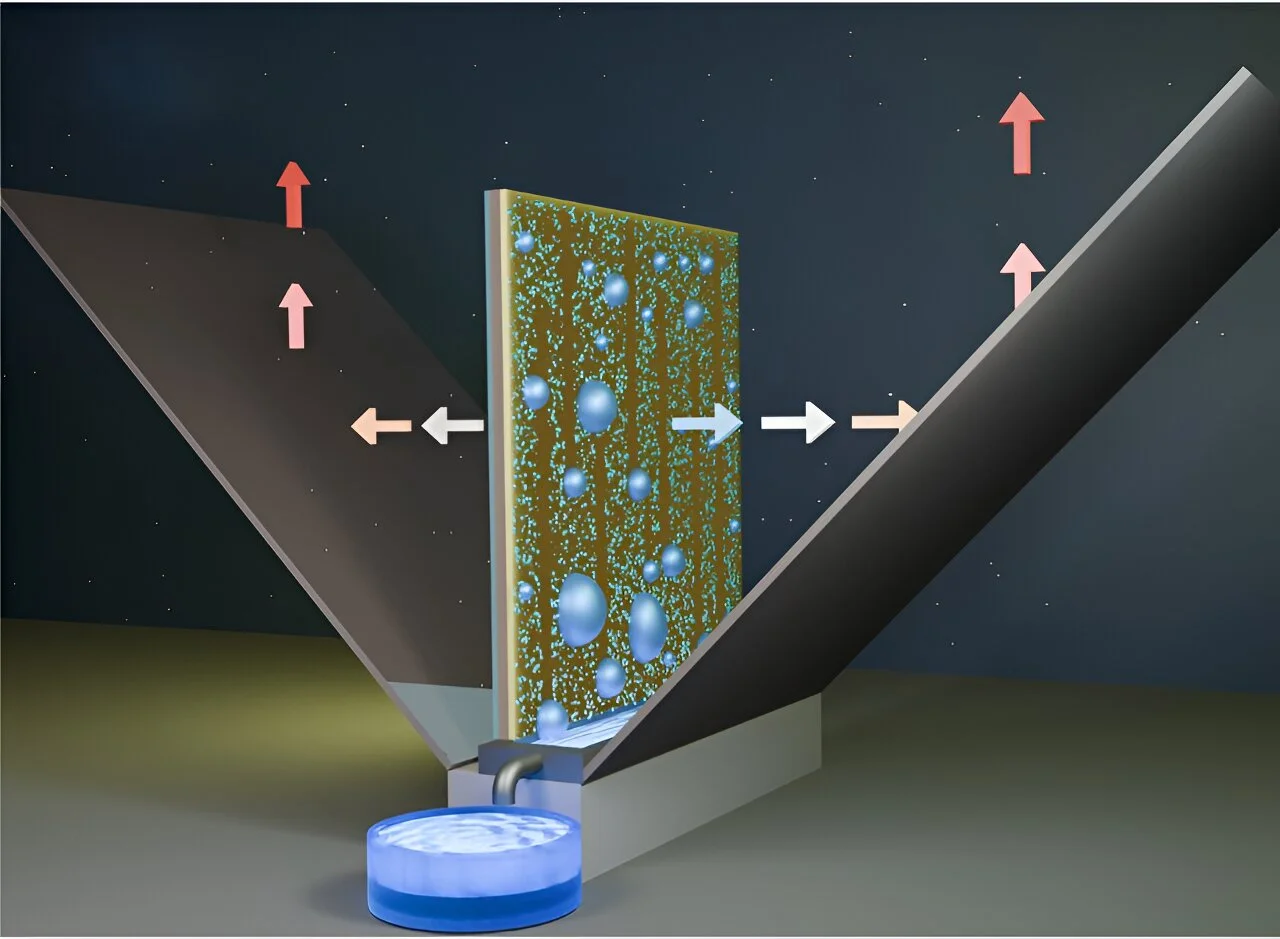Their device needs no electricity, as it extracts water from the air using nothing more than gravity and relies on cheap, readily available materials.
Along with keeping the solar cells and other semiconductor technologies cool, the water can be repurposed for irrigation, washing, cooling buildings on which the solar cells are placed, and other applications.
Scientists estimate that the atmosphere contains six times more water than all the fresh water in the rivers combined.
Its abundance of sunlight and heavy investment in solar cell technology has positioned Saudi Arabia well in its transition to becoming a leading exporter of renewable energy.

I was really wondering how this actually works, but the article doesn’t explain it at all.
Abstract of the original study paper. Couldn’t get the whole paper. Behind a paywall.
Abstract Radiative cooling significantly lowers condenser temperatures below ambient levels, enabling atmospheric water harvesting (AWH) without additional energy. However, traditional sky-facing condensers have low cooling power density, and water droplets remain pinned on surface, requiring active condensate collection. To overcome these challenges, a lubricated surface (LS) coating—consisting of highly scalable polydimethylsiloxane elastomer lubricated with silicone oil—is introduced on the condenser side in a vertical double-sided architecture. The design not only effectively doubles the local cooling power, but also eliminates contact-line pinning, enabling passive, gravity-driven collection of water. Robust AWH is demonstrated from a 30 × 30 cm2 sample in outdoor environments (of varying humidity levels and wind speeds in different months) and with no artificial flow of humidified air. In one outdoor test, the passive water collection rate of LS coating reaches 21 g m−2 h−1 double that on superhydrophobic surface, 10 g m−2 h−1. In indoor testing (20 °C and 80% relative humidity), this system achieves a condensation rate ≈87% of the theoretical limit with up to 90% of the total condensate passively collected. this approach achieves effective AWH in a decentralized approach that removes the need for piping infrastructure and external energy input
Remind me in two hours or more and I can get you a PDF.
Reminding you now ^^
“It’s a dehumidifier!” - Thunderfoot, probably.





